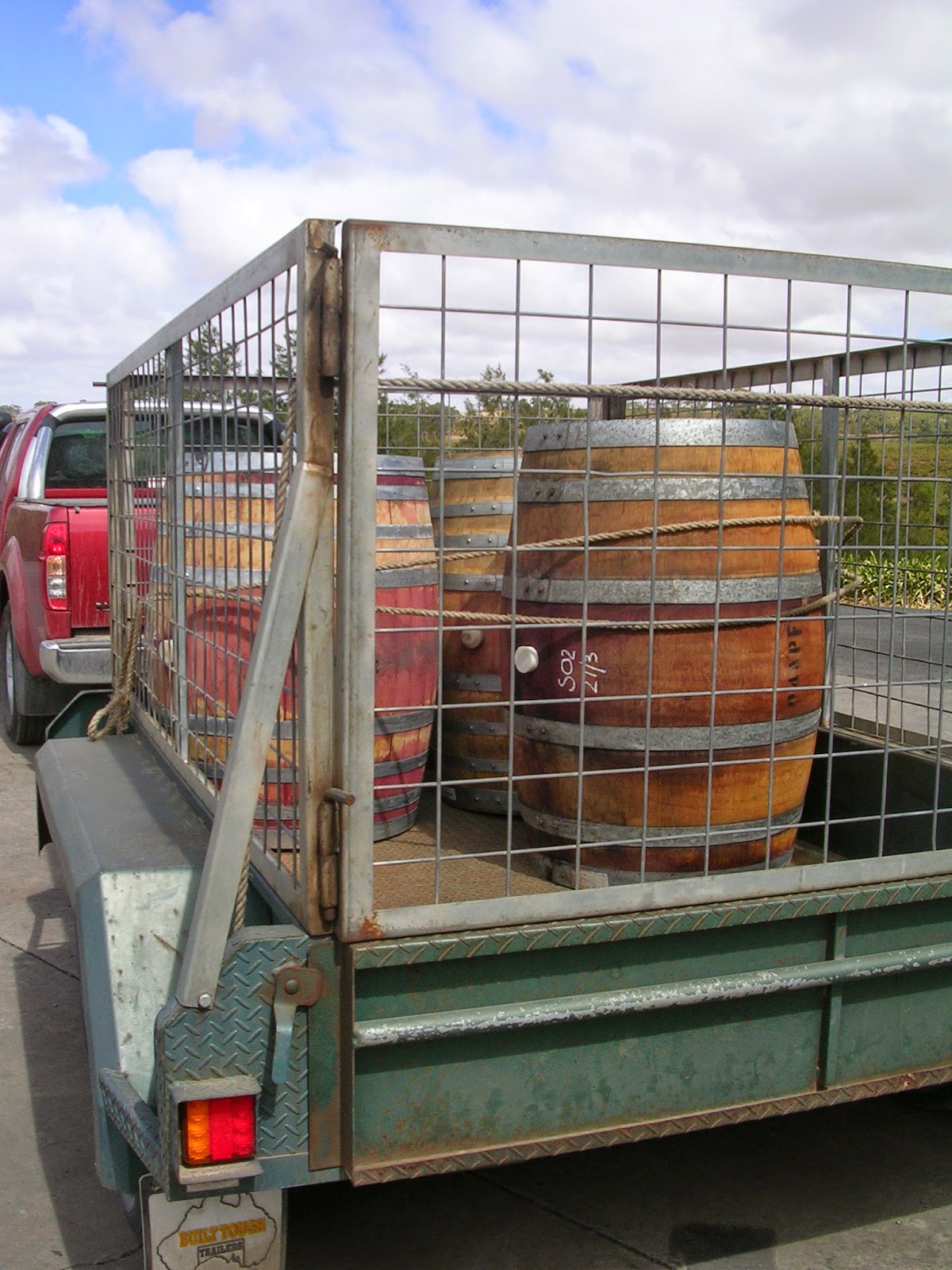I was privileged to work the end of the harvest at Kilikanoon. Though I was technically there for the blending of Athena's first vintage, I did get to do a bit of cellar work--and witness the picking of some pretty special liquid gold from the Estate. Today, we're picking Cane Cut Riesling!
But first, let's discuss another sticky situation. Kevin was about to create his very first fortified wine! So far, the Cane Cut has been the only dessert offering from Kilikanoon. This is naturally sweet (we'll get to that in a second) but this year offered up some exceptional Viognier (I tasted it in tank) but when the question was posed: "what do we do with this?" the answer was to add spirits from a company they deal with in the Barossa. Kevin and I are hauling wine barrels there...
Here we are at the distillery. Kevin and I tasted 3 kinds of additions: grain alcohol, neutral spirits, and brandy. I felt like Goldilocks. One was too brash, one didn't have flavor... but the brandy was just right. Unanimous decision. The barrels were then left to have the spirit added and age with the beautiful wine to round out the flavor and stop fermentation before all the sugar is converted to alcohol. Hello, sweet, golden lusciousness! Can't wait to get my hands on it when it's finished.
Hard at work!! Kevin, of course, our fearless leader, my hero, and Troy, vineyard manager. Troy is about to take the workers out to get started on Kilikanoon's original sticky, Cane Cut Riesling. Sometimes the term "cane cut" is a bit of misnomer (kind of like "old vines" since neither term has regulation) but Kilikanoon makes a TRUE style. The canes (that feed water to the grapes) are cut when the grapes are at their ripest point, which makes the fruit dry up - any time you lose water, the sugars and alcohol levels are raised significantly. This makes a dessert wine without adding spirits.
Here is what the Riesling looks like on the vine when it's super ripe. You can see the patches of shriveled fruit amongst the big, fleshy bunches of "healthy" grapes that could make dry wine.
And here are some Cane Cut bunches--nothing but liquid sunshine and happiness here!
Here the guys are busy picking the grapes by hand - I stole away to "take pictures" (AKA eat a handful of delicious super-ripe grapes). Most grapes don't taste very good off the vine (Viognier and Sagrantino are exceptions I've found) but these raisined Riesling nuggets are like eating candy! I basically slapped my own hand, reminded myself of how good this bottled, and took more pictures.
As you can see, everything is picked together in this vineyard. They are fermented separately, though, to test for ripeness. There's a specific sugar level that they're looking for so that the wine is sweet enough to qualify as a dessert wine without being cloying - Kevin is such a savant in the vineyard that he tasted the grapes and guessed a 50-50 blend of ripe and raisined grapes. After measuring both sugar levels and figuring the levels in tank on both types, it was determined that the brilliant man in charge's guess was within .2 of the desired number. This year was easy--simply blend everything together! (In an unripe year, for example, some of the ripe Riesling would be omitted from the blend to go into the Reserve dry style to keep the sweetness up in this one.)
Both were amazing creations. Both rely on nature for the important part in the wine. Delicious!!









